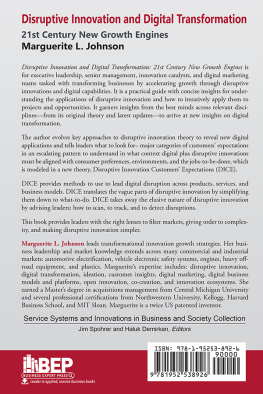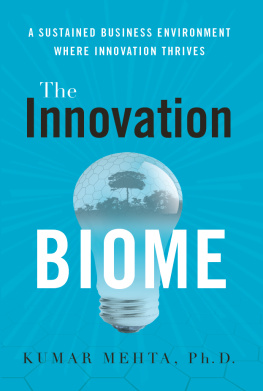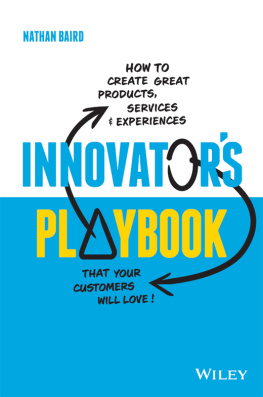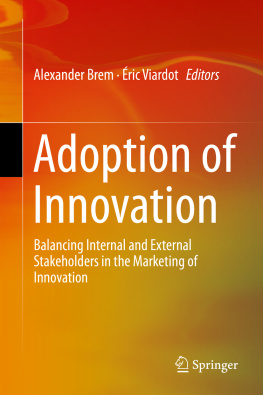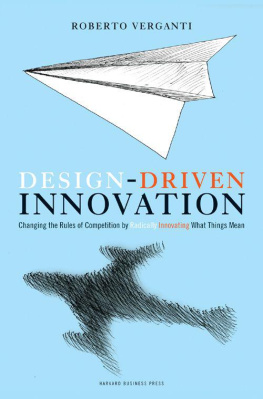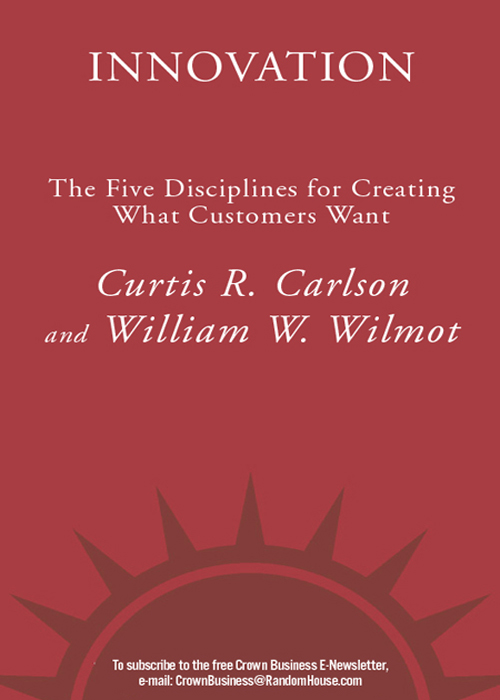

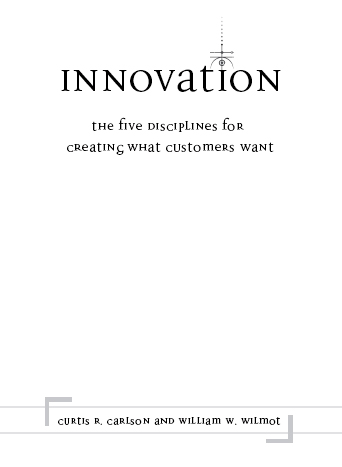
CONTENTS
This book is dedicated to our colleagues at SRI International and at our subsidiary, the Sarnoff Corporation, and to our partners and customers around the world. Special gratitude goes to the following teammates whose ideas, human values, and commitment to creating the highest customer value made it possible:
N ORMAN W INARSKY
H ERMAN G YR
L EONARD P OLIZZOTTO
L ASZLO G YORFFY
WHY LISTEN TO US?
Hardly a day passes without someone commenting that the ability to innovate has become a survival issue for you as an individual, the enterprise you work for, and the country you live in. Theres no arguing that point, and in fact we would go further and say that theres no more important issue today.
Given that, why should you read us? What do we bring to the party? Our answer is twofold: first, the world-changing innovations that SRI International helped create over sixty years. And second, a process and way of thinking about innovation that is intimately connected to the way enterprises function in both the short and the long term.
Day in and day out, the chances are that youre using an SRI innovation. Here are a few examples:
the computer mouse and the personal computer interface you use at work and home.
the Internet designations .com, .org, and .gov, which were developed as a way to organize domain names.
mobile communication, where we sent the first transmissions over wireless and wired networks. We also received the first Arpanet log-on, which was the precursor to the Internet.
the squarish numbers on the bottom of your checks that enable your bank to maintain your account balance correctly.
the tracking system that enables the U.S. Postal Service to quickly get mail to you from the millions of pieces that people send around the country daily
Halofantrine, an antimalarial drug to combat one of the worlds most lethal killerswhich is only one among the drugs we have helped discover or develop, some of which treat HIV and cancer
the high-definition television in your living room, for which we received an Emmy Award (one of the ten that we have received), the highest award in broadcasting. Weve also won an Academy Award for our contributions to motion picture production.
We have created dozens of new companies and pioneered revolutionary new business opportunities. Nuance Communications, for example, is the industry leader in computer speech recognition. When you talk to an automated operator at a company such as Charles Schwab, you are probably talking to a computer that includes technology from SRI.
Consider also Intuitive Surgical, the leading minimally invasive surgical company, which uses technology pioneered at SRI. Instead of performing heart surgery, for example, by opening up a persons chest cavity, Intuitive Surgicals da Vinci surgical system allows a doctor across the roomor the planetto use three small probes placed through the chest wall to perform the operation, seeing and feeling as if she is operating directly on the patient. Most important, the patients stay in the hospital is also shortened due to faster healing, and that makes both patients and insurance companies happy. The time people stay in the hospital drops from five or eight days to two or three, and the time spent away from work is cut from two months to about one.
Or consider Artificial Muscle, Inc. Imagine that you could create motors and actuators that had the virtues of human musclemotors that were light, efficient, powerful, and configured in a wide array of sizes and shapes. These motors have the potential to replace many small electric motors currently in use in cars and consumer appliances. Or consider PacketHop, a business that potentially takes telecommunication companies out of the loop by enabling cell phones to receive and transmit messages by creating their own ad hoc network without going through a phone company.
At SRI International we have completed tens of thousands of projects and helped create hundreds of billions of dollars of marketplace value. We have served customers in more than half the countries in the world, and we work in all key technical areasinfotech, biotech, and nanotech. Today we are working to further revolutionize and improve our world, from producing clean energy, to transforming the way drugs are developed, to making the educational system much more effective, to securing the Internet and the U.S. homeland.
At SRI we are motivated to work on problems that are important, not just interesting. For example, we have demonstrated a fuel cell to burn dirty coal efficiently and cleanly, a system to produce titanium at almost the cost of aluminum, and a computer to teach freshman physics. We are also developing drugs to remediate the effects of addiction, and we are creating the next generation of intelligent, mobile communication devices.
As we will make clear, these great innovations were not done exclusively at SRI. Rather we had thousands of superb customers and partners who all did their part in transitioning the ideas, inventions, and innovations of SRI into the marketplace. We cannot thank them enough for their contributions.
As these examples suggest, we live in a world of abundance. Unlike the industrial age, improvements in knowledge-based products and services have no upper limits. The opportunities are effectively limitless if you can innovate. Innovation leads to prosperity and a higher quality of life. It is the basis for increased productivity, competitiveness, and national wealth. And ultimately, the major problems of our agepoverty, health, and the environmentwill only be addressed through our collective ability to innovate. But an ability to innovate rapidly is required if we are to identify and develop the abundance that is before us.
That leads to the second thing we bring to the table: We have developed a disciplined process of innovation that is practically linked to the way things get done in an enterprise. This disciplined process of innovation is the centerpiece of the bookthe Five Disciplines of Innovation.
Many people are confused about what leads to successful innovations. Innovation is not just the invention of some clever new gadget. It is much more than that. Innovation is the successful creation and delivery of a new or improved product or service in the marketplace. Or to put it another way, innovation is the process that turns an idea into value for the customer and results in sustainable profit for the enterprise. Innovations can be incremental (a childs new toy) or transformational (the development of instant photography). In all cases innovations deliver new customer value in the marketplace.
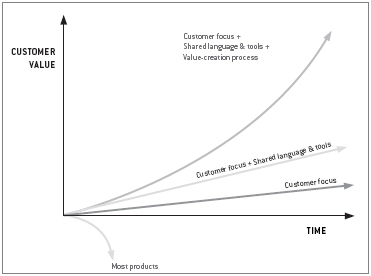
Figure 1.1: Enterprises that focus on their customers have shared language and tools for understanding customer value, and have a value-creation process do the best at creating new customer value.
What we often find, though, is confusion about what innovation is and how it is accomplished. Instead of focusing on creating new customer value, we often find leadership in organizations trying to encourage creativity with the hope of achieving greater success. They sometimes even have large teams working to improve creativity throughout the enterprise. But the real question is, Creativity for what? Focusing just on creativity can lead to misplaced resources and frustration. For example, people often claim that creative organizations cannot be disciplined in their processes. We profoundly disagree. The most creative individuals, teams, and organizations are extremely disciplined. But it is a special kind of disciplineone that unleashes creativity in the service of developing important innovations.
Next page

